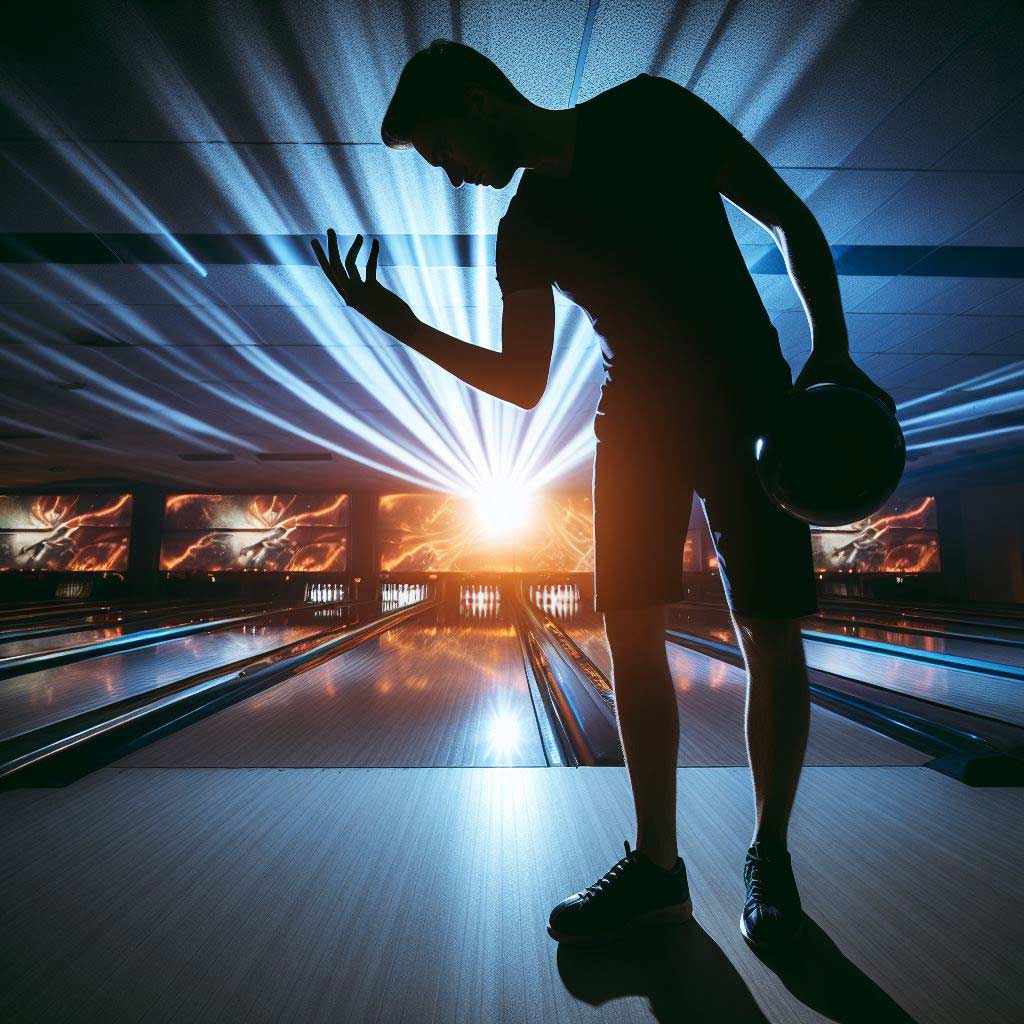Bowling is a popular recreational activity and competitive sport across many age groups. However, repetitive motions of the bowling delivery and handling heavier bowling balls can take a toll on the fingers.
Jammed, sprained, fractured, blistered, or lacerated fingers are some of the most common bowling injuries. Being able to recognize causes, utilize preventative strategies, and appropriately treat bowling finger injuries allows all levels to participate safely.
Causes Leading to Bowling Finger Injuries
Common causes behind bowling finger injuries include:
Improper Finger Hole Fit
Having an inaccurate fit of finger holes inside bowling balls is a primary culprit. If holes are too loose, excess movement and friction lead to conditions like blisters or cuts on the fingers.
Excessively tight holes restrict blood flow, increasing injury risk as well. Working with expert pro-shop staff ensures proper fingertip measurements and fit adjustments over time.
Incorrect Hand and Finger Positioning
Bowling requires a curled wrist and proper follow-through motions to release the ball without strain on the fingers. Gripping the ball too deep into the palm area or not aligning finger joints properly during delivery puts unhealthy pressure on connective tissues, tendons, and joints. A certified coach helps analyze grip, swing adjustments, and rolling motions to prevent improper stresses.
Gripping Balls Too Tightly
Bowling with too tight a grip pressures sensitive finger tendons, muscles, and joints excessively through the extension motion. This makes grip strength more prone to decline as the muscles fatigue.
Relaxing tension along the fingers and thumb when picking up heavier bowling balls protects from sharp pain or weakness that causes falls or drops leading to jams.
Overexerting Joints and Muscles
Repeated bowling sessions with high volumes of games rolled strain the finger joints and surrounding muscle tissues. The force of a bowling ball striking pins also sends consistent vibrations back through the fingers. Without recovery time factored in, microscopic tears along tendons and inflammation near knuckles or wrists may surface.
Sudden Impacts and Misdirected Forces
A sudden fall when picking up a bowling ball or accidental drops places high levels of unexpected pressure in targeted areas of the fingers or wrists.
Attempting to catch heavier falling balls with the fingertips or palms leads to hyperextension and jamming risks. Additionally, using wrist support braces improperly may direct more force impact through unaffected fingers instead.
Common Bowling Finger Injuries and Treatments
Blisters
Friction from the friction and heat of bowling leads to fluid-filled pockets known as blisters along fingers making contact with holes. The transparent tops of blisters appear puffy until popped, oozing liquid. Avoid licking ruptured blisters as saliva carries bacteria risking infection.
Prevention
- Ensure proper hole fit from the pro shop
- Apply athletic tape on hot spots proactively
- Wear finger sleeves and tips for extra padding
Treatment
- Clean with antiseptic spray and bandage
- Pop using a sterilized needle if bothersome
- See a doctor if signs of infection appear
Cuts and Lacerations
Exposed skin along the fingertips and knuckles may endure nicks, scratches, or cuts during repetitive bowling with poor finger hole quality.
Rough interior surfaces, loose debris, or damaged gripping material wear down skin resilience over time. Exposed wounds require prompt first aid care to avoid further contamination risk until new skin layers are generated.
Prevention
- Inspect equipment for sharp edges or splits
- File down loose material
- Replace damaged bowling balls
Treatment
- Stop bowling immediately if actively bleeding
- Run under tap water, pat dry and dress small cuts
- Use antiseptic creams on bandages
- Visit urgent care for stitches on deeper lacerations
Jammed Fingers
Attempting to break a bowling ball’s fall with bare hands or getting a finger caught inside the ball during release leads to painfully jammed fingers.
The unexpectedly forced bending and pressure lead to torn ligaments or dislocated joints. Jamming most commonly affects the thumb and middle finger positioned deepest inside the grip. Swelling, inflammation, and stiffness onset rapidly post-injury.
Prevention
- Begin all bowling ball lifts from a squatting position
- Carry bowling balls using proper finger holes
- Release balls forward onto lane instead of dropping
Treatment
- Rest and splint affected finger asap
- Apply ice packs to reduce swelling
- Buddy tape to neighboring finger for support
- Schedule x-ray to confirm no fractures
Fractures
Unprotected falls holding bowling balls may lead to enough pressure during landing to fracture thinner finger bones. Roller bones along the middle knuckles endure the most force upon impact.
Fractures also arise hitting fingers against hard surfaces and attempting to break ball drops. Unset breaks heal slowly and improperly.
Symptoms
- Visible crookedness
- Intense localized pain
- Numbness and tingling
- Bruising and swelling
Treatment
- Seek emergency care for splits, displaced bones or angulated joints
- Stabilize fractures until seen by orthopedic hand specialists
- Surgery often required align broken bones with pins
- Strict splinting and therapy afterward
Sprains
The forced over-stretching of tendons and ligaments around finger joints leads to sprains – graded as mild, moderate, or severe depending on tissue damage.
Attempting to lift balls not weight suited to finger strength or getting rings, bracelets, or watches caught mid-release commonly causes such tears. Sprains show a limited range of motion, stiffness, and throbbing discomfort around the affected joint.
Prevention
- Warm up fingers pre-game with stretches
- Wear tape for extra joint support
Treatment
- Follow RICE protocol – Rest, Ice, Compress and Elevate
- Attempt gentle finger flexion and extension
- Use short-term over-the-counter anti-inflammatory medication as needed for pain and swelling
- Visit a hand therapist for customized splinting and rehab protocols on moderate to severe sprains
Preventing Bowling Finger Injury Recurrence
Using protective wear, tailoring weight loads, and recognizing fatigue onset works to prevent the recurrence of bowling finger injury patterns long term.
Taping and Splinting
Athletic-style taping wraps along injury-prone fingers bolster compression support across strained tendons and ligaments during repetitive bowling. Custom thermoplastic splints worn nightly also protect damaged tissue recovering from fractures or surgical repairs.
Finger Exercises
Simple finger extension, flexion, and spreader motions build connective tissue resilience along with finger dexterity and grip strength matched to bowling needs. Stress balls also maintain muscle responsiveness to avoid overcompensation patterns leading to new injury areas.
Proper Ball Weights
Progressively working up to properly weighted bowling balls for finger strength avoids overexertion-based issues. Kids and elderly players use 6-10lb house balls minimizing injury risk from poor mechanics.
The typical adult male uses a 15lb ball size, with women starting around 12 lbs depending on natural hand dominance and technique control.
Recognizing Injury Onset
Tuning into pain onset cues and responding promptly circumvents minor discomfort progressing into traumatic injury needing extensive intervention.
No bowling through finger pain – address signs like loss of grip strength, swelling, or shooting sensations early. Better to skip a few league nights proactively than undergo surgery or physical therapy for months after.
In Conclusion
Bowling places substantial repetitive strain on the fingers through ball-handling motions leading to an array of overuse injuries.
Prioritizing properly fitted equipment, strong technique, proactive padding, and splinting facilitates participation in bowling across all ages without finger injury.
Learning to manage early warning discomfort cues and treat symptoms appropriately ensures the preservation of finger health for years of bowling enjoyment. Simple adjustments go a long way to avoid lost play and recovery time from traumatic finger injuries needing surgery or rehab.
Frequency Asked Questions
What is a common injury in bowling?
A very common bowling injury is to the fingers from inserting them into balls and the repetitive motion from bowling. Issues like blisters, cuts, fractures, sprains, and jammed fingers frequently arise.
Can your body hurt from bowling?
Yes, the repetitive motion of bowling can lead to various overuse injuries if proper form, ball weights, and muscle conditioning are not maintained. Back, wrist, elbow, and knee pain are common bowling injury complaints.
Can you pull a muscle while bowling?
It is quite possible to pull or strain muscles in the arm, shoulders, and lower back region either from improper bowling technique or attempts to handle weights exceeding strength capacity while bowling. Warmups help avoid muscle pulls.
Why does bowling hurt my legs?
Excess sliding or improper landing after the bowling release taxes stabilizer muscles of the leg after repeated games. Poor shoes without needed slide or support also cause leg soreness as does bending incorrectly to pick up balls.
What are the most common fast bowling injuries?
For fast-pitch bowlers, rotator cuff damage, lumbar stress fractures, tennis elbow, and ankle impingement from the run-up and high-force delivery may cause injury-related pain.
Is bowling bad for your arm?
Bowling within appropriate weight and rest limitations using good form will not harm arms. However, muscle strains, elbow inflammation, and shoulder impingement syndrome do manifest from overexertion or poor bowling biomechanics.
How do you relieve bowling pain?
Applying ice packs to sore areas after bowling, using anti-inflammatory medication, performing gentle stretches, and seeing physiotherapists for custom exercise programs help relieve most bowling-associated body pains.
What muscles do you use when you bowl?
Major muscle groups engaged in bowling include legs, glutes, abdominals, chest, upper back, shoulders, biceps, and forearms. Grip and wrist flexibility are also needed for proper release.
What is a common hip injury from bowling?
Improper sliding technique during the bowling release or repeated straightening from a knees-bent ball retrieval position may contribute to hip flexor strains or general inflammation. Proper warmup and not overextending the hip joint help avoid most hip bowling injuries.





